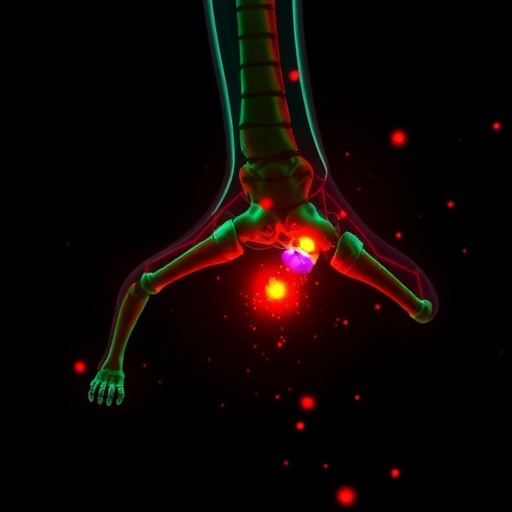
Credit: College of ACES, University of Illinois
URBANA, Ill. ¬- In today’s global economy, production of goods depends on inputs from many trade partners around the world. Companies and governments need a deeper understanding of the global value chain to reduce costs, maintain a profitable production system, and anticipate ripple effects of disruptions in the supply chain.
Applied economists from the University of Illinois have developed a new model for in-depth analysis of global supply chain linkages across countries and industries, providing a rich tool that delivers valuable insights for businesses and policy makers around the world.
“We live in a time when production processes are very much fragmented. In order to end up with one type of good, a car for example, many inputs are assembled abroad and imported from different places around the world. For instance, a car sold by leading U.S. companies may have anywhere from just 2% to 85% of U.S. and Canadian parts in it,” says Sandy Dall’Erba, professor in the Department of Agricultural and Consumer Economics and director of the Regional Economics Applications Laboratory (REAL) at U of I. Dall’Erba is co-author of the study.
“Coordination of the entire supply chain system becomes more and more complicated and sensitive to disruptions at any stage throughout the process. If just one element in your supply chain is missing, it will have a ripple effect on the entire industry,” Dall’Erba notes. “An example of this was the global semiconductor shortage that recently forced U.S. automakers to halt production.”
The researchers started with a widely used economic growth model called shift-share decomposition and expanded its components to include interregional and inter-sectoral linkages. This allows them to identify, for each industrial sector and each country, if the growth of the sector of interest is due to supply chain linkages at the domestic level versus the international level. The latter can be further split between linkages with trade agreement partners (such as NAFTA for the U.S.) and countries from the rest of the world, highlighting the benefits of trade agreements.
“When we apply our technique to understand the drivers of growth in a particular sector, we not only can say whether it is growing faster or slower than another sector or region, we can also identify other sectors that are important for the growth of this particular sector,” says Claudia Montania, the study’s lead author. Montania was a visiting scholar in REAL when she conducted the study and is currently a researcher at the United Nations Development Accelerator Lab in Asuncion, Paraguay.
Traditional shift-share decomposition includes information about changes in the industry mix and in region-specific features such as taxes, regulations, or characteristics of the labor force. But it does not include connections among different regions or different industry sectors.
“The information provided by the traditional shift-share model is not enough,” Dall’Erba notes. “For example, it would be a mistake to study only the food manufacturing sector in order to know what is happening in that sector, because it obviously depends on grain and livestock production which, in turn, depends on water and fertilizers among other inputs.
“In addition, grains are not always used for food manufacturing but they may end up as fuel. The supply chain of any sector is intertwined with that of many other sectors,” he adds.
In the paper, Dall’Erba and Montania apply their model to country-sector linkages in the European Union, allowing them to compare three levels of connections – domestic, within the EU, and with the rest of the world, and to identify which ones matter most for each sector. The analysis included 35 industrial sectors in 15 countries from 1995 to 2006.
Overall, the researchers found the most important linkages were among EU trade partners; the second-most important were domestic ties; and the least important linkages were with the rest of the world. They emphasize the results vary across sectors and countries. For example, the supply-chain linkages in place to manufacture a French car are different from those that exist for a German car. Their multi-dynamic model can provide detailed, specific information for each country-sector combination as needed for preemptive and tailored planning and policy making.
“Knowing which type of linkages are the most important for your product or your sector can be very useful for local governments, for companies, and for producers, because you can make better plans to achieve the expected growth for your sector,” Montania states. “You can also promote trade and diplomatic relationships in regions where you have strong sectoral linkages.”
Dall’Erba points out this information can help countries and industries protect against supply chain disruptions. Those can occur in many forms, ranging from natural disasters such as drought or earthquake to political upheaval, trade wars, and even the global pandemic. For instance, the extreme disruption airline companies have experienced as demand for air travel dropped in 2020 means both Boeing and Airbus have significantly reduced their production and so have the multiple companies manufacturing airplane components from fuselage to seat belts.
“COVID-19 has pushed several governments to consider bringing back some industries in order to get better control over all the supply chain links. However, it is not necessarily a viable option as many companies have already de-located their unskilled labor-intensive production to low-wage countries while maintaining high-skilled workers at home,” Dall’Erba concludes.
###
The Department of Agricultural and Consumer Economics and the Regional Economics Applications Laboratory (REAL) are in the College of Agricultural, Consumer and Environmental Sciences, University of Illinois.
The paper, “Multi-dynamic interregional input-output shiftshare: model, theory and application” is published in Economic Systems Research. Authors include Claudia Montania and Sandy Dall’Erba.
[https:/
Media Contact
MARIANNE STEIN
[email protected]
Original Source
https:/
Related Journal Article
http://dx.





